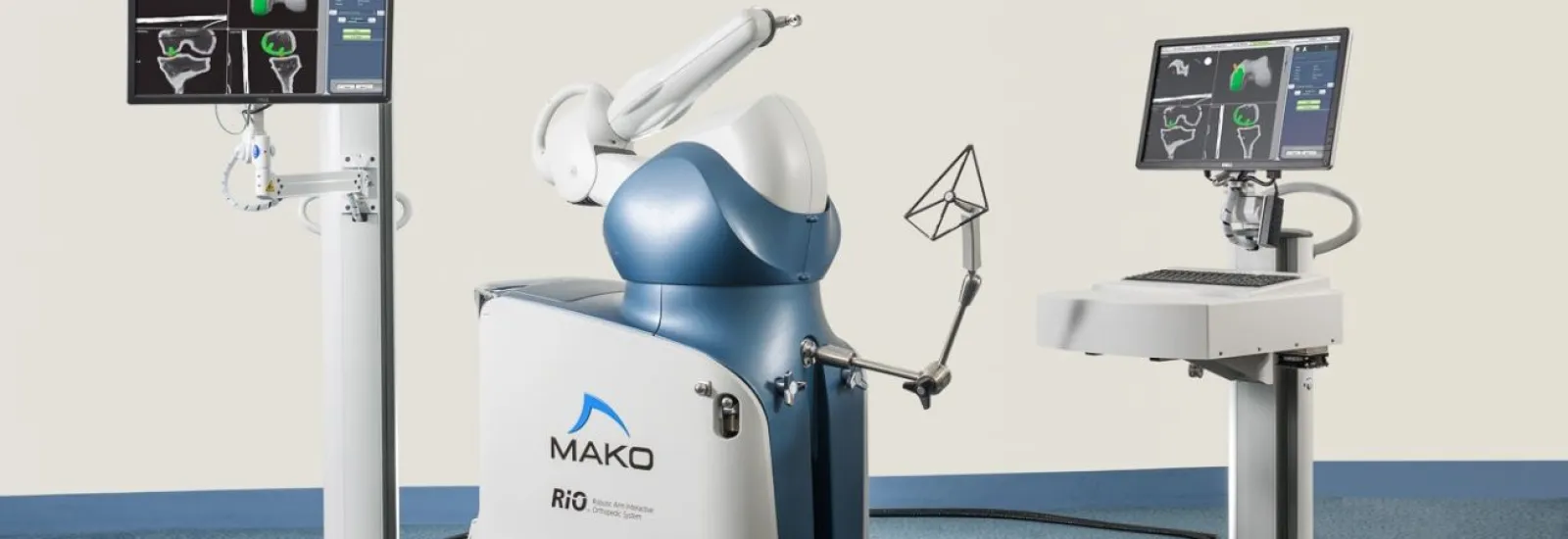
An Overview of Mako Robotic Joint Replacement Surgery
Over 790,000 knee replacement surgeries are performed each year in the United States. A knee replacement is a kind of joint surgery. Joint surgeries have evolved over the years and more are being performed with the assistance of robotic devices, like the Mako robotic arm.
We're taking a closer look at Mako robotic joint replacement
surgery and if it could be right for your joint surgery.
When do you need joint replacement surgery?
Joints are where the ends of two or more bones meet
one another, such as the knee, elbow, wrist and shoulder. There is cartilage—a
jelly-like tissue—in joints between the bones that help them bend and move
smoothly. Over time, the cartilage between bones can wear down.
When the
cartilage between joints has worn down to the point where it causes the bones
to rub against one another, resulting in inflammation, swelling, pain and loss
of range of motion or mobility, action is often necessary. When damaged joints
prevent you from engaging in daily tasks, joint replacement surgery may be recommended.
How do you find out if you need joint replacement surgery?
After
discussing your symptoms with your primary care doctor, they will have you
schedule an appointment with an orthopedic surgeon. The orthopedic surgeon will
have you come in for an office visit and evaluate your range-of-motion, degree
of damage to your joint, strength and stability using an exam and X-rays. After
assessing, your doctor will recommend whether or not you would benefit from
joint replacement surgery and the best approach for you.
What happens during joint replacement surgery?
When you have a
joint replaced, your doctor will remove damaged bone and cartilage and replace
it with an artificial joint made from metal alloys, plastics or polymers. There
are several kinds of joint replacement surgery, including:
- Total Joint Replacement - A damaged joint is replaced with an artificial joint implant that mimics the joint's natural motion.
- Minimally Invasive Total Joint Replacement - This joint replacement surgery uses smaller incisions and cuts through less muscle to replace the damaged joint.
- Robotic-Assisted Joint Replacement Surgery - In robotic joint surgery, an interactive robot can provide the surgeon with real-time visual and tactile feedback throughout the procedure to optimize precision and correct placement of the joint.
- Joint Revision - Artificial joints don't last forever. Eventually, they will need to be replaced through a joint revision, which is surgery to remove an infected, worn-out, or failed artificial joint and replace it with a new one.
Your doctor
will assess which joint replacement procedure is best for you. Newer
technologies are being more widely utilized every day to improve accuracy and
shorten recovery time, including the Mako robotic-arm system.
What is Mako robotic joint replacement surgery?
The Mako is
an interactive robotic arm that allows a surgeon to see and feel the joint
during surgery, which helps your doctor perform a procedure with increased
accuracy and speed.
How does Mako robotic surgery work?
A 3D image of
your joint is captured on a CT scan. This image is used as a map for the
surgery, allowing your doctor to see in precise detail where the joint is
damaged and plan how to repair it. During the procedure, Mako provides your
doctor with real-time visual and tactile feedback, ensuring the most accurate
surgery, as well as increasing speed and efficiency.
What kind of joint surgeries can use the Mako robotic arm?
The Mako robotic
arm can be used in robotic knee replacement surgery, partial knee replacement
and total hip replacement surgeries. A technology expansion in 2021 is expected
to add total shoulder replacement to the list of procedures that can use the
Mako. Reid Orthopedics will be among the first in the nation to offer this
procedure.
What are the benefits of robotic joint replacement surgery?
Robotic knee
surgery, hip surgery and shoulder surgery offer increased precision, reduced
amounts of analgesics, shorter procedure times and faster recovery times
compared with traditional joint replacement surgeries.
When should I have joint surgery?
Your doctor
will recommend the appropriate time and method of surgery for you. However, a
recent study shows that patients who had joint replacement
surgeries while their mobility was still good were able to recover more quickly
after surgery compared to patients who delayed surgery.
Where can I learn more about robotic knee replacement surgery?
Talk with
your orthopedic and sports medicine doctor for more
information on robotic joint surgery, including Mako knee surgery. Reid Health
recently added a second Mako robot, providing surgeons with the ability to
schedule patients for a joint replacement procedure sooner. To schedule an
appointment at Reid Health, call (765) 935-8905 or request
an appointment online.

